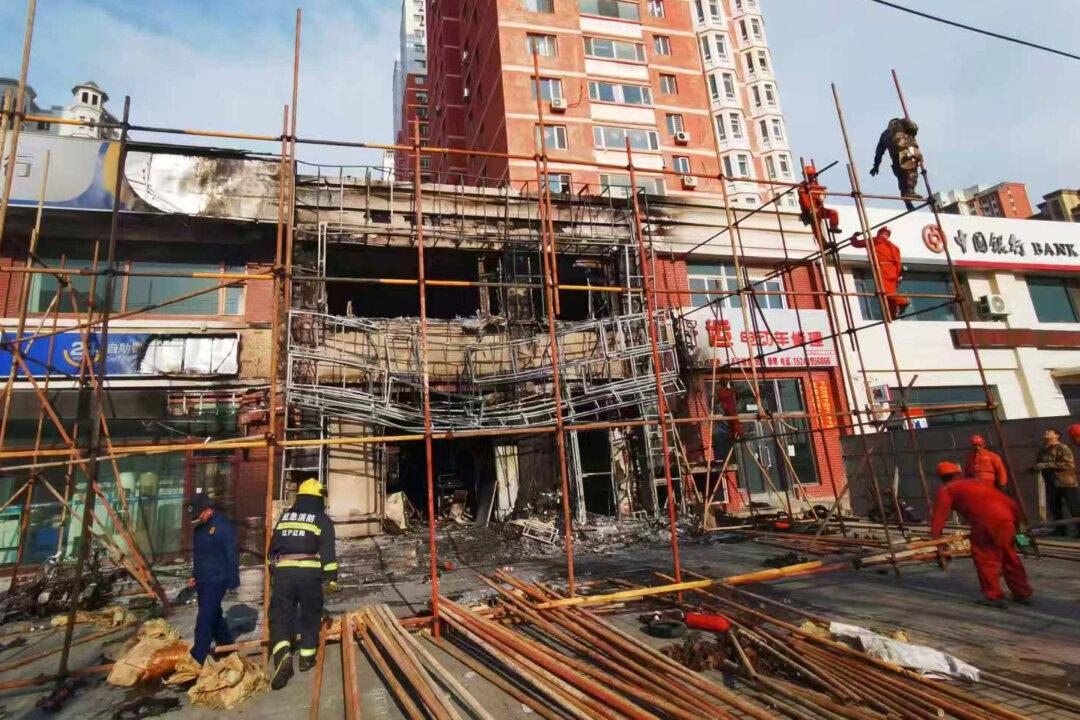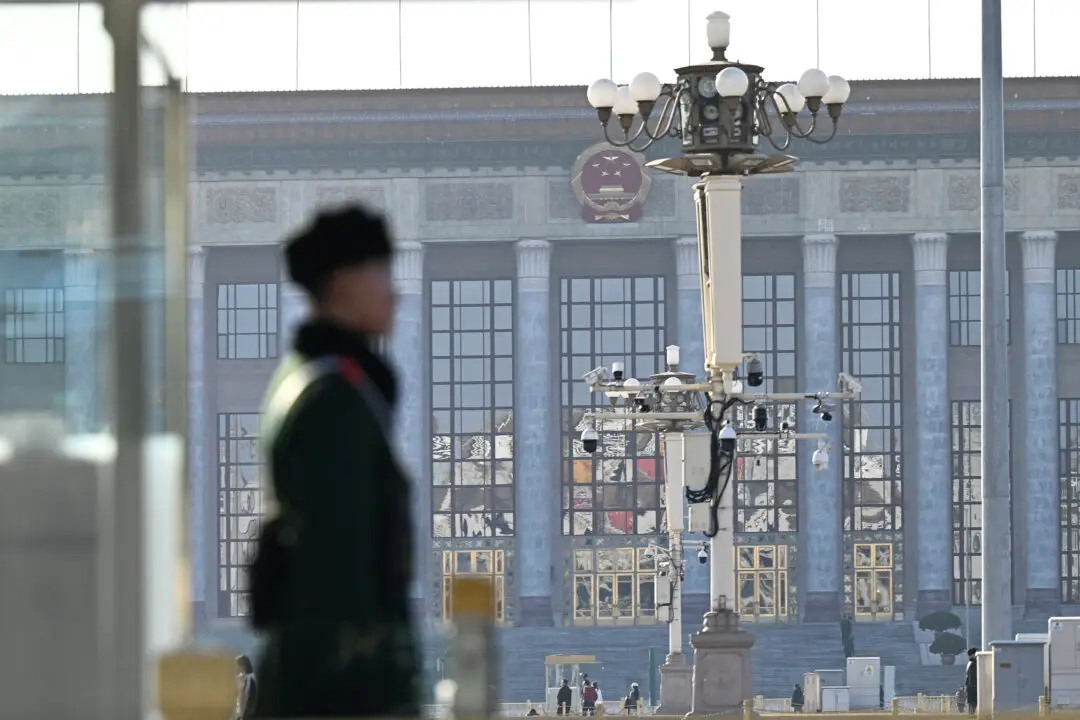China views its nuclear capabilities as bargaining chips in international relations, analysts say
News Analysis
With President Donald Trump’s
directive to develop a missile defense system for the mainland United States, Chinese leaders are facing a strategic dilemma. While the communist regime views its nuclear capabilities as crucial bargaining tools, expanding its arsenal amid a corruption scandal poses risks to its already strained economy, according to analysts.
Trump signed an executive
order on Jan. 27 to create an “Iron Dome for America.” The executive order stated that threats from next-generation strategic weapons have become “more intense and complex” over the past 40 years because of the advancements made by “peer and near-peer adversaries.” The document described the threat of attack by hypersonic missiles and other advanced aerial attacks as “the most catastrophic threat” to the United States.
The order doesn’t mention any specific nations by name, but analysts said China, described by some as the
fastest-growing nuclear power, appears to be among the countries that the Trump administration has in mind.
“It intends to offset the missile threats from the Chinese Communist Party (CCP),” Su Tzu-yun, a defense strategy expert from the Institute for National Defense and Security Research, a government-funded think tank in Taiwan, told The Epoch Times.
The Chinese regime has never disclosed the precise number of nuclear weapons it has in stock. The U.S. Defense Department estimates that by 2024, China will have more than 600 operational nuclear warheads, up from about
200 in 2020. The Pentagon projected that Beijing will bring its total stockpile to more than 1,000 by 2030 and continue to expand its arsenal beyond that. By comparison, the United States and Russia, bound by the
New START treaty that is set to expire in 2026, can deploy up to 1,550 nuclear warheads.
“The PLA’s expanding nuclear force will enable it to target more U.S. cities, military facilities, and leadership sites than ever before in a potential nuclear conflict,” the Pentagon stated in its threat assessment
report published in December 2024, using the abbreviation of the official name of the CCP’s military, the People’s Liberation Army.
‘Bargaining Chips’
Experts have
dismissed Beijing’s claims that its nuclear buildup was merely intended for “self-defense.” Instead, Su argued that the CCP views its nuclear arsenal as a means to deter foreign intervention, especially if its military force is used to assert control over self-ruled Taiwan or the expansive South China Sea.
Su characterizes this strategy as a “political denial.”
“As the CCP’s nuclear arsenal grows, countries that want to defend Taiwan may be anxious about potential nuclear retaliation from the CCP,” he said.
A larger nuclear arsenal could also enhance the regime’s influence in international politics, Su said.
“With sufficient nuclear warheads, the potential threat [to rival powers] could translate into political leverage for China,” he said.
Trump, on Feb. 14,
expressed a hope to engage in arms control negotiations with CCP leader Xi Jinping and Russian President Vladimir Putin, aiming for an agreement to cut their defense budget in half.
“There’s no reason for us to be building brand new nuclear weapons. We already have so many,” Trump told reporters in the White House. “You could destroy the world 50 times over, 100 times over. And here we are building new nuclear weapons, and they’re building nuclear weapons.”
Outside observers remain skeptical about Beijing’s willingness to make such significant cuts.
“If China were to halve its [defense] spending or limit its nuclear arsenal, it would lose bargaining chips” in negotiations with other nations,
Shen Ming-Shih, an expert on the Chinese military at Taiwan’s Institute for National Defense and Security Research, told The Epoch Times.
It is likely that China will reject Trump’s proposal, he said. If Washington ratchets up the pressure, Beijing might outwardly agree but, in reality, still “fib or hide its possession of crucial weapons against the United States,” he said.
Currently, China is the world’s second-largest military spender. In March 2024, despite the country’s economic woes, Chinese leaders announced a
7.2 percent defense budget boost in 2024, pushing the total funding for its armed forces to a record
1.6 trillion yuan (roughly $221 billion). It was the 30th straight year of increases in its military expenditure. In comparison, U.S. defense spending for fiscal year 2024 was about $
820 billion, while Russia planned to spend 10.4 trillion rubles (about $114 billion) on defense.
Because of the lack of transparency in the distribution of military spending, analysts and U.S. officials have long contended that China’s actual military expenditure likely
exceeds its official figures; it’s sometimes estimated to be more than
three times higher, putting it on par with U.S. defense spending. These estimates could be even
higher if they were to include funding for military research and development, particularly given Beijing’s strategy of integrating private-sector innovations into its defense base, known as the
military-civil fusion initiative.
According to the Pentagon’s 2024 report, China’s real military spending could be 40 percent to 90 percent higher than its officially disclosed budget. It estimated China’s total defense expenditure to be $330 billion to $450 billion.
Nonetheless, Su said, Washington stands to gain from the nuclear negotiations, regardless of how Beijing or Moscow responds, because the U.S. president was the first to put forward a “peace plan.”
‘Steal US Technology’
Shen cautioned that the CCP has a record of stealing intellectual property to advance its military. Building the Iron Dome may enhance U.S. defense, but it could “prompt China to seek to steal U.S. technology,” he said.
When Israel built its own Iron Dome with U.S. assistance in the 2010s, Chinese hackers were accused by cybersecurity
companies and
experts of stealing technical documents from contractors’ computers.
Shen pointed out that for many years, Beijing imported military equipment from Russia,
reverse-engineering its technologies—including hypersonic missiles and the missile defense system—and creating knockoffs.
More than 500 cases of Chinese theft of Russian weapons and military equipment have been identified over the past 17 years, Yevgeny Livadny, then-head of intellectual property projects at the giant Russian state arms manufacturer Rostec,
said in 2019. Among the systems that Beijing allegedly stole were aircraft engines and portable air defense missiles.
Additionally, the quality of China’s weapons remains unclear amid a series of corruption allegations within the country’s defense sector. The recent anti-graft campaign, starting in the summer of 2023, has led to the downfall of more than a dozen senior military commanders, including the
senior leadership of the PLA Rocket Force, which controls its conventional and nuclear missiles, and generals who once oversaw arms
procurement.
U.S. defense officials have assessed that corruption may
hinder the Chinese armed forces’ modernization efforts.
Shen suggested that Trump is following a strategy similar to that of President Ronald Reagan.
“Reagan’s Space Defense Initiative emphasized the development of space weapons and the ability against missile attacks from the former Soviet Union, leading to an arms race that ultimately contributed to the collapse of the Communist rule,” Shen said.
“I won’t rule out the possibility that Trump follows a similar playbook. ... China, grappling with military corruption and economic challenges, and Russia, already weakened by the war, may allocate resources to compete with the United States, risking their own collapse [in the process].”
Luo Ya contributed to this report.






